Unit 1: (1.2) Terrestrial Biomes
1/14
There's no tags or description
Looks like no tags are added yet.
Name | Mastery | Learn | Test | Matching | Spaced |
|---|
No study sessions yet.
15 Terms
biome
An area with a particular average temperature and precipitation (climate)
Terrestrial
relating to the land (not aquatic, or water-based)
Climate
The average weather conditions in an area over a long period of time
Taiga (boreal forest, northern coniferous forest)
Forests with mostly coniferous (cone-bearing) trees that can tolerate cold winters and short growing seasons. Needles of coniferous trees are adapted to tolerate freezing temperatures, so they stay on all year (evergreen).
Cold temperature, waxy, tough needles that don't break down easily both contribute to slow decomposition and low soil nutrient levels.
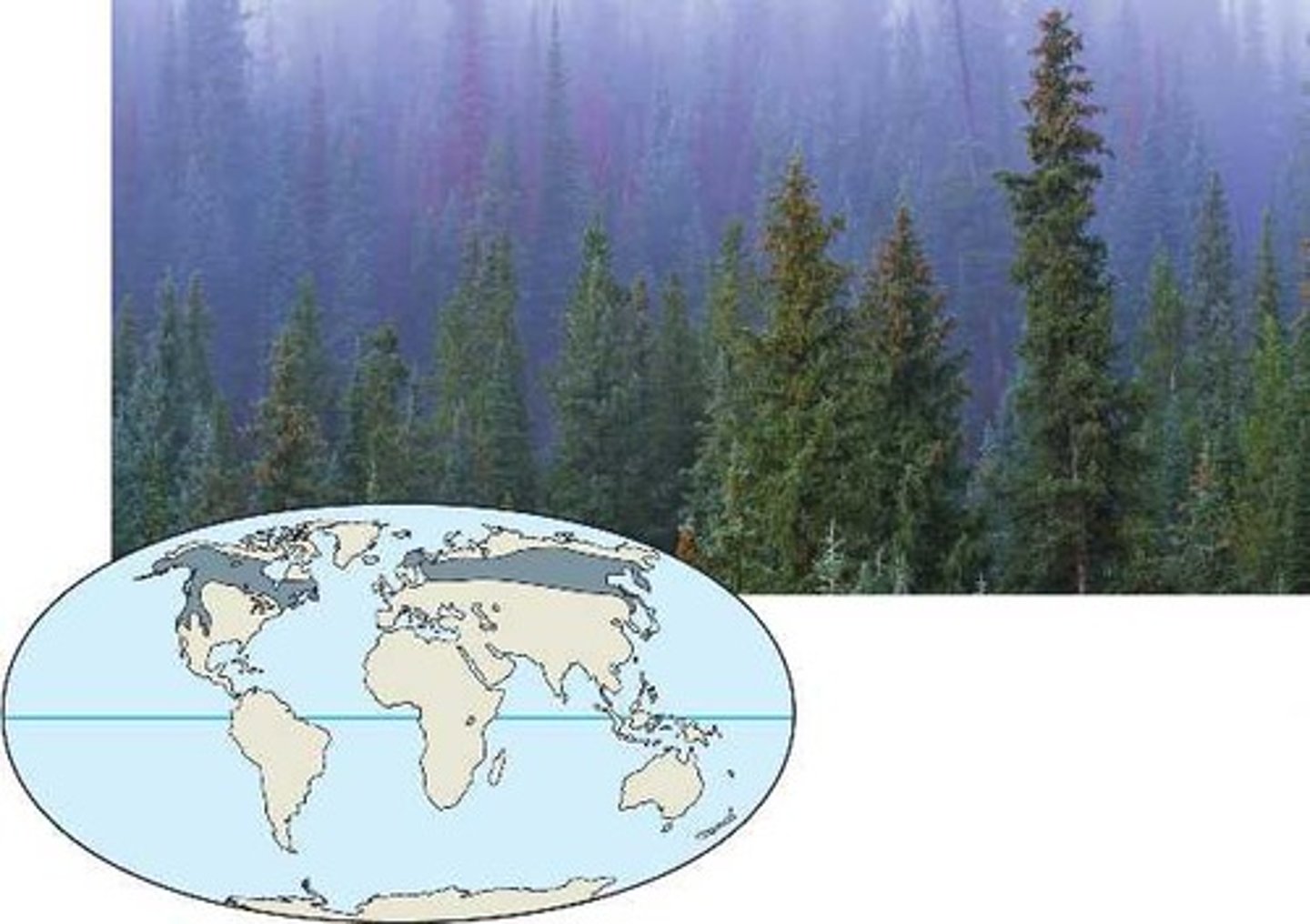
Tundra
Flat, cold, treeless biome with permanently frozen soils in winter, and a short, 4 month growing season in the summer. Even in summer, deeper soil remains totally frozen (permafrost) preventing taller trees from establishing roots. Mostly shrubs, grasses, mosses, and lichens that can withstand shallow, waterlogged soil & cold temperatures.
Cold temp. = low decomp. = low soil nutrients
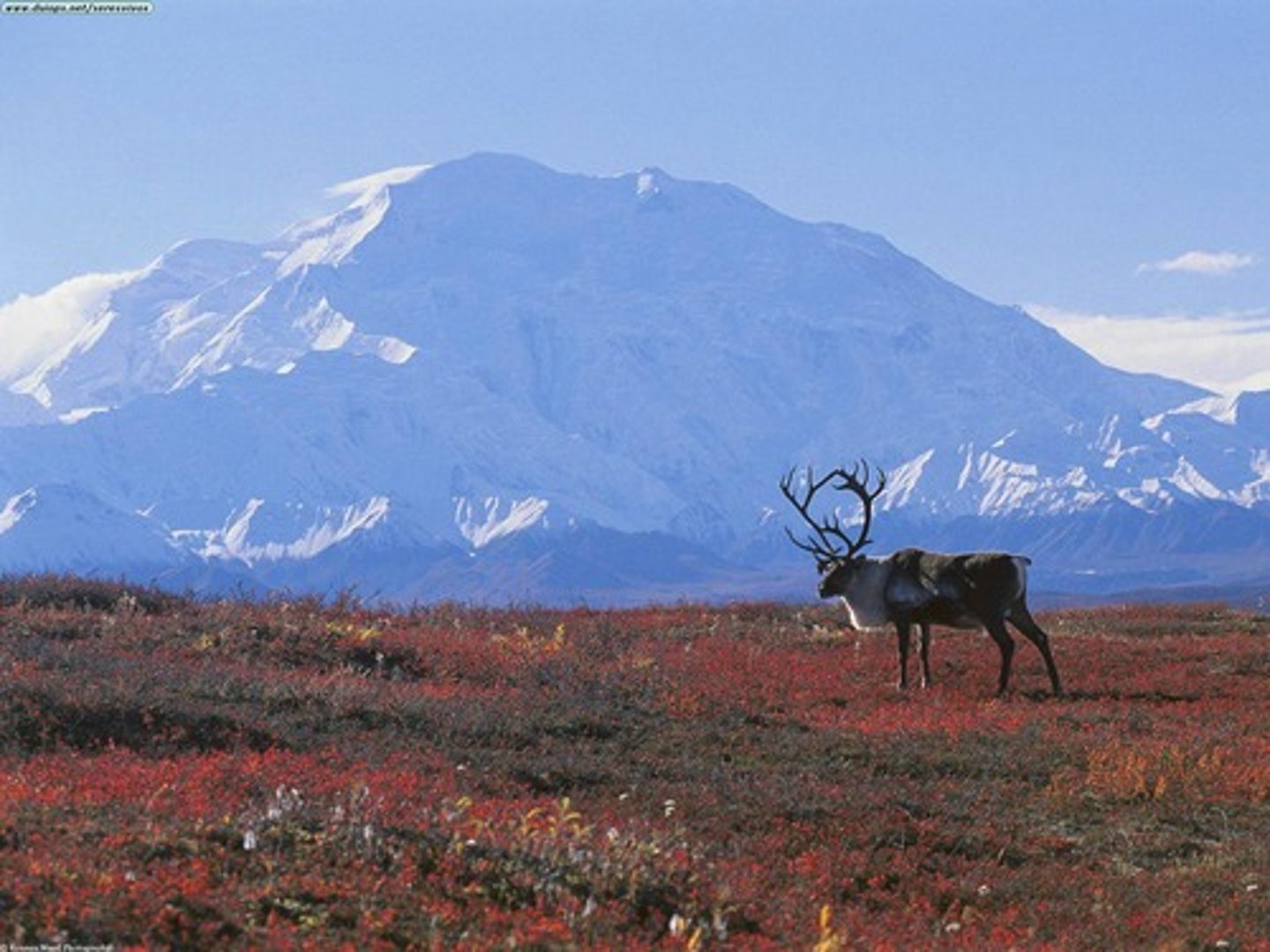
temperate seasonal forest
A biome with warmer summers and colder winters than temperate rainforests and dominated by deciduous (broadleaf - maples, oaks, etc.) trees.
High summer temp. = faster decomp.
Broadleaves easier to decomp. than needles = higher soil nutrients than boreal forests or temperate rainforests
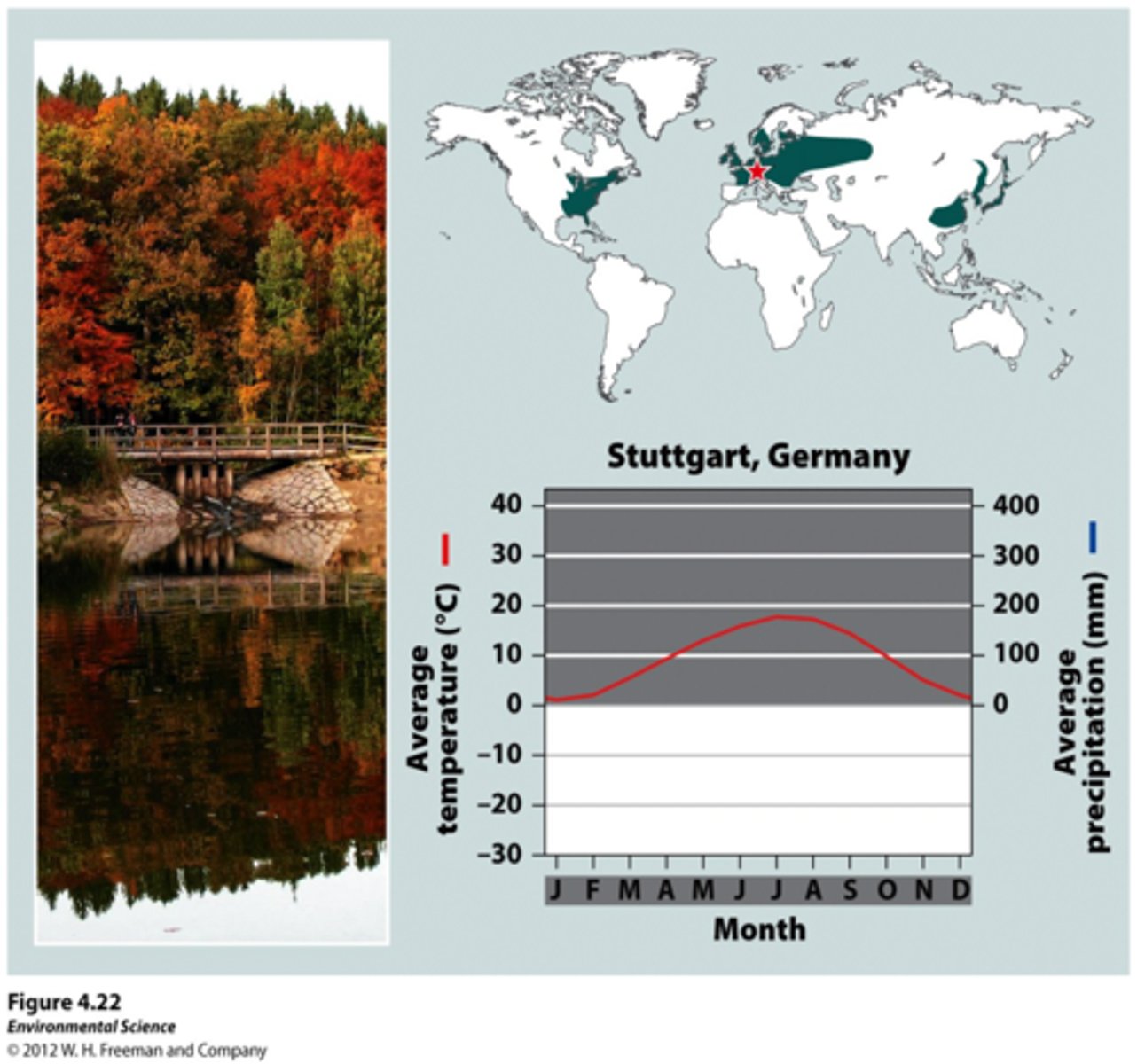
Temperate rainforest
Cool, rainy forests found along coasts, such as the northern Pacific. Water vapor from oceans keeps the temperature moderate and provides lots of moisture for high precipitation. Huge conifers like the red woods of California are found in these biomes.
Cooler temperature = slow decomp.
heavy rainfall & rapid absorption by large trees = low nutrient levels in soil
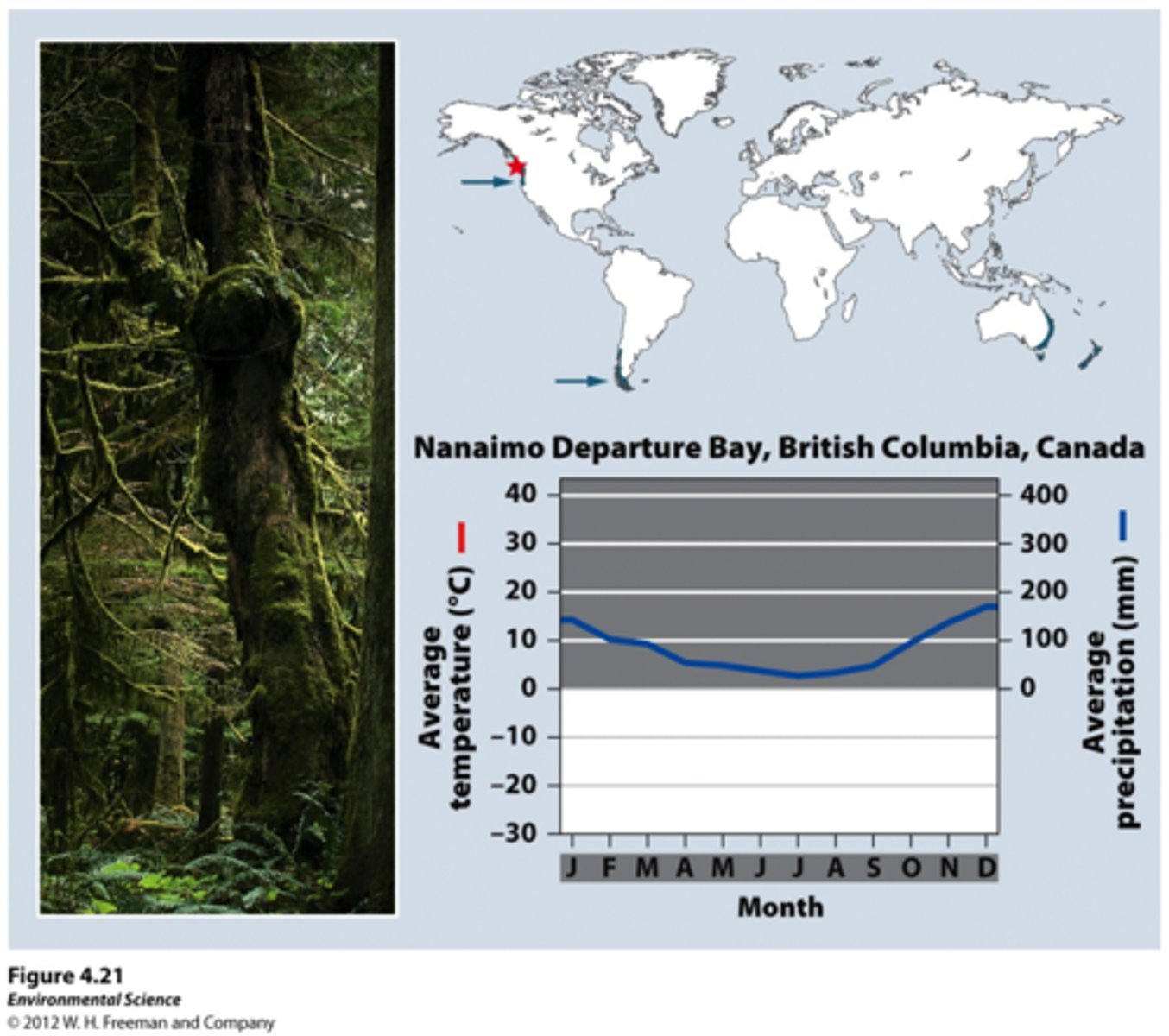
woodland/shrubland (chaparral)
Hot dry summers with mild, rainy winters. 12 month growing period, but relatively low precipitation in summer, and lower temperature in winter limit plant growth. Plants here must be adapted to both fires and drought (sagebrush, scrub oak, and shrubs).
High rain in winter = leaching of nutrients = low nutrient soil
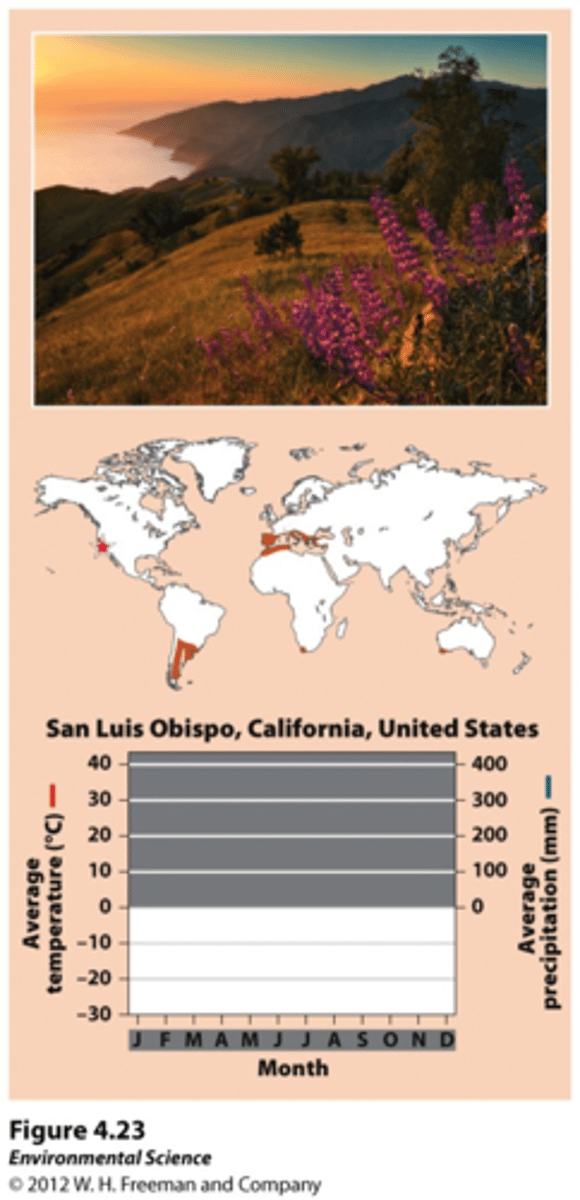
Tropical rainforests
Near the equator. Warm with lots of precipitation. Little seasonal temperature variation. Highly productive (high plant growth) terrestrial biome.
Hot temp. = rapid decomp. of organic matter
High plant growth = rapid absorption of nutrients
Low nutrient soils
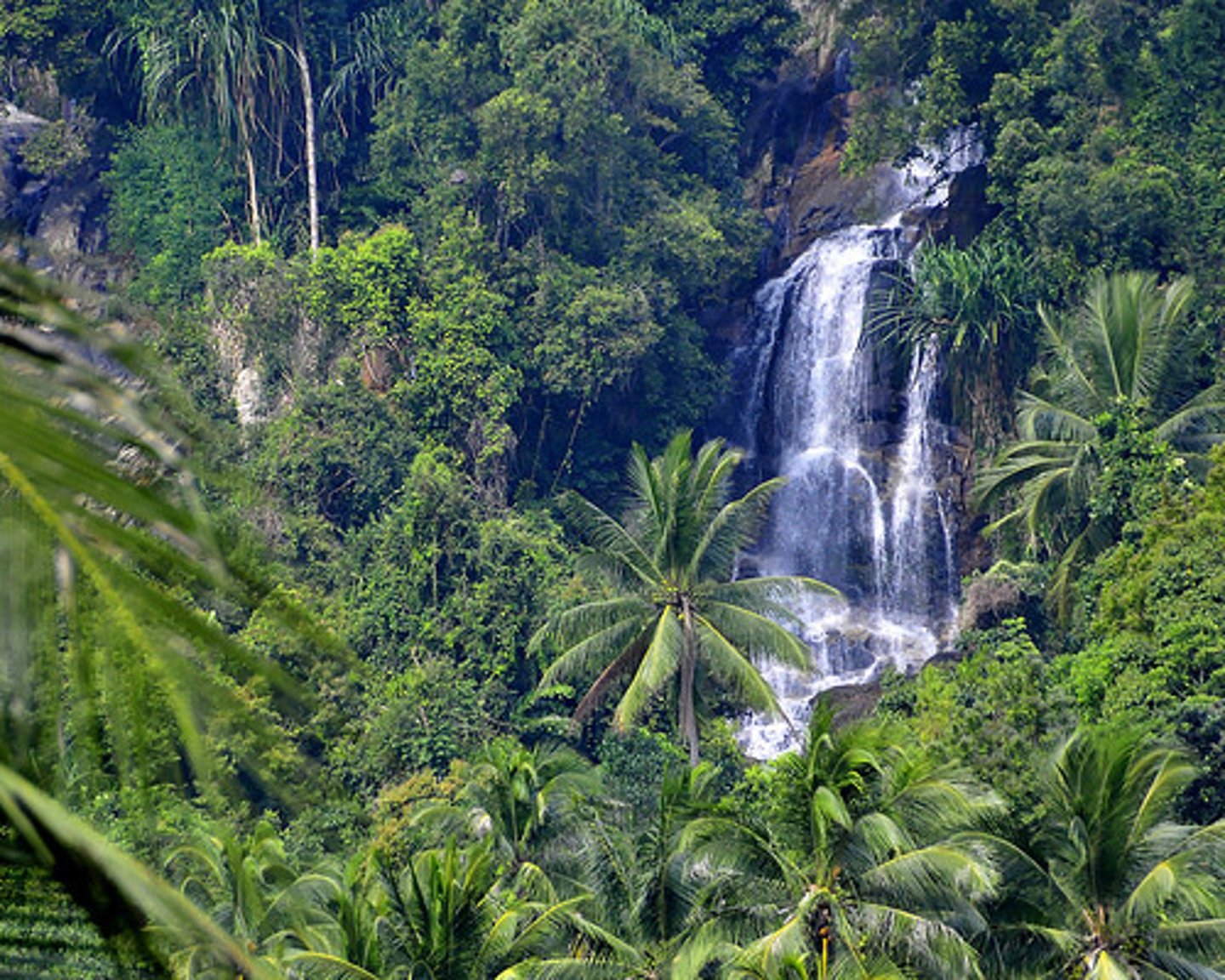
Savanna
Warm biome with distinct wet and dry seasons. Dominated by clustered trees and widespread grasses. Trees adapted to drought by dropping leaves in dry season.
Warm temperature = high decomp. = high soil nutrients

Desert
Occur around 30 degrees N & S latitude. Very high temperatures and low precipitation levels limit plants to drought-resistant species like cacti & succulents. Needles are modified leaves to prevent water loss and most photosynthesis happens in the stem, to limit water loss.
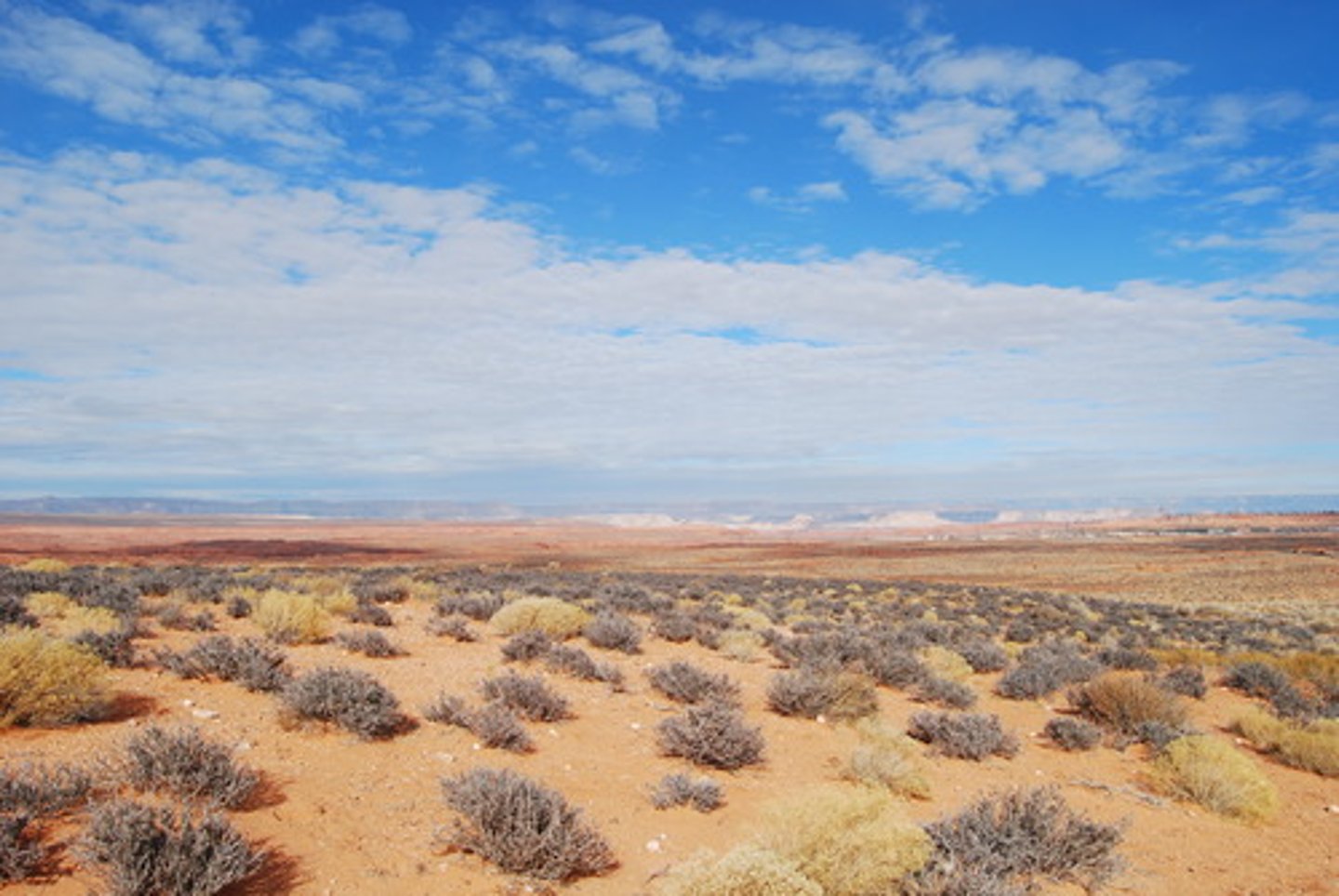
Latitude
distance north or south of the Equator, measured in degrees
Altitude
Elevation (height) above sea level
Permafrost
permanently frozen layer of soil beneath the surface of the ground, particularly in tundra biomes. Thaws out in the winter to produce standing water and water-logged soils that further restrict plant growth in tundra biomes.
temperate grassland/cold desert
Great plaines (prairie) biome with cold, harsh winters and hot, dry summers restrict plant growth to mostly grasses and non-wood plants like wild flowers. Deep roots can reach water in droughts and store energy for quick regrowth after frequent fires due to such dry conditions.
High temperature & long growing season = rapid decomp. = high soil nutrients